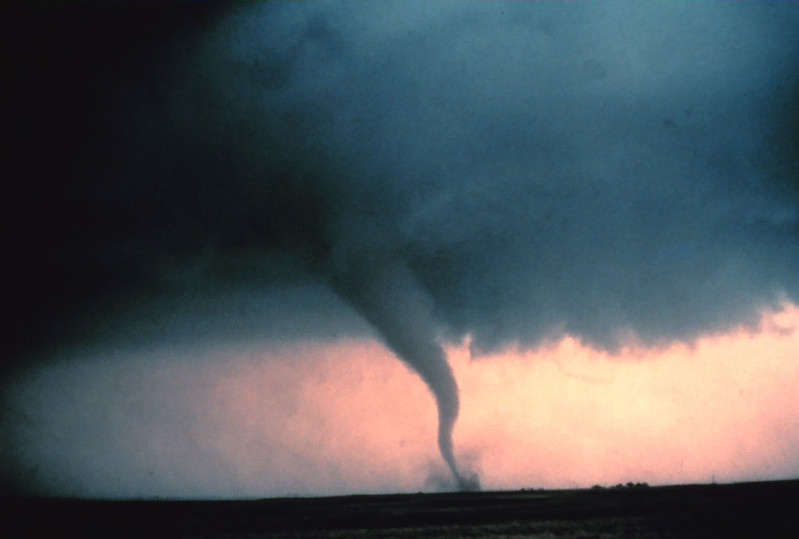What is a tornado? People are often confused about what a tornado is and how it forms. A tornado is a violent, whirling storm that occurs with the greatest frequency, often accompanied by thunder and lightning. Tornadoes also occur occasionally in the United States, Canada, Australia, and some parts of Europe. No atmospheric disturbance is known to be more violent than a tornado. However, the record of twenty-five of these storms shows that they caused heavy damage to properties and deaths.

About 100 of these storms occur in the United States annually, though not all cause widespread damage. In popular language, tornadoes are often called cyclones. However, the word cyclone, scientifically speaking, refers to a different type of storm. Tornado is a Spanish word meaning fewer. Tornadoes usually form during thunderstorms, and they occur on warm days when air humidity is excessive.
The tornado cloud is a densely black, funnel-shaped mass pointing downward from dark storm clouds in violent commotion. This funnel-shaped cloud is the storm center, and the velocity of its swirling movement is thought to be 40 Q, or 500 miles an hour, in some cases. The condition giving rise to such a cloud may be described as a condition of unstable equilibrium in the atmosphere, with a warm layer of humid air next to the earth and a cooler layer above it.
A disturbance in the atmosphere causes an upward current in the warm air. Cold air blows in from the surroundings and causes a rotary movement to rise. The whirl is so rapid at the center that a small area of low pressure is produced, the temperature is reduced, and moisture condensation takes place; thus, a cloud is formed. One often sees miniature tornadoes in open spaces on a hot afternoon, in small whirling eddies of dust. Water spouts at sea are like land tornadoes. Nearly all of these storms move eastward and generally northeastward. They usually travel at forty or fifty miles an hour, but speeds of 100 miles per hour have been recorded.
The destructive power is not in the straight wind but in the rotating mass, which swirls counterclockwise. Though the storm path may be only a few rods in width, within that path, buildings are torn down, trees are uprooted, heavy bridges are swept away, and locomotives are lifted from the track. Tornadoes rarely occur in mountainous regions or where there is not much moisture in the atmosphere. Barometric pressure in the vicinity of a tornado falls very rapidly.
The United States Weather Bureau does not forecast these stories because it is impossible to predict their exact location. Meteorologists advise: If a tornado cloud advances, get into a “cyclone cellar,” if there is one. In a frame house, go to the southwest corner of the basement, as such a house is likely to be removed from its foundations intact.
In a brick or masonry structure, the basement is the most dangerous place, since a tornado will rip such a house to pieces and whirl the debris into the basement. Tornadoes often come to the central Mississippi Valley, usually in May, June, and July.
Read More: The Facts of Great Tri-State Tornado of 1925
